Shergaon a beautiful place
Shergaon, also know as Shenthuk or Sherbumtang is a small village in West Kameng District of Arunachal Pradesh. A little more than hundred families live here. The small village is surrounded by lofty moutains of eastern Himalayas. It has three small streams namely Natu Kho ,Peng Leng Kho and Chowskorong Kho. Flowing of these three streams right through the village has created a good amount of flat land ,making it good for cultivation.
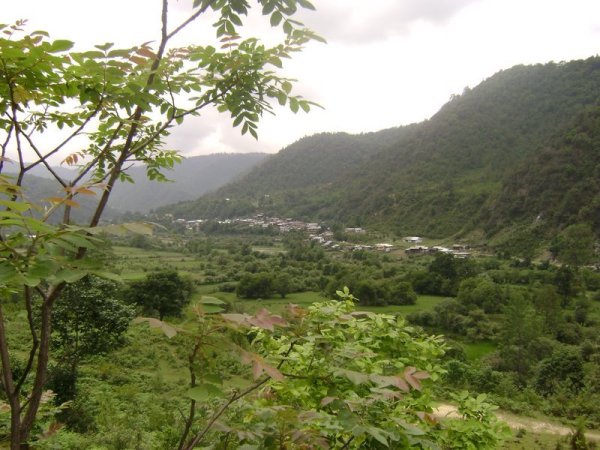
View of Shergaon
People here engage themselves in agriculture activities in huge amount. Most of the farming is done for self consuming and for village level tax. Every household pays their share of agricultural product, mostly grains as tax to village council. Village council in turn used them to pay the monks. They also use them during festivals. The popular farming method among the tribal people shifting cultivation is not used. They depend on crop rotation, mixed crop (growing two different crops in same field) as their basic farming practices. Due to lots stone in fields, two persons are required to plough the land along with two bulls of course. One person takes care of the bulls and the other takes care of the plough. The person who ploughs the land too has got a name, he is called Thongkho. Woman can never be Thongkho, as ploughing of land is considered man’s job.
They grow Maize, Rice, Ragi, Tomato, Potato, Cabbage, Brinjal, Chilli, Garlic, Onion, Lai Patta (English name not known will update later).In the recent years Tomato cultivation is catching up as a commercial crop. As people get good returns in hard cash Tomato has become number one cash crop replacing Potato.
Shergaon has very good state of art horticulture farm. Apple, walnut, plum, chestnut, peach, cherry, pear, pomegranate, kiwi are grown. You can find more than 17 varieties of Apples. Golden apple, Red Delicious and Maharaji are some of the popular varieties found here. If you happen to visit Shergaon, vsiting StateHorticulture farm is must.
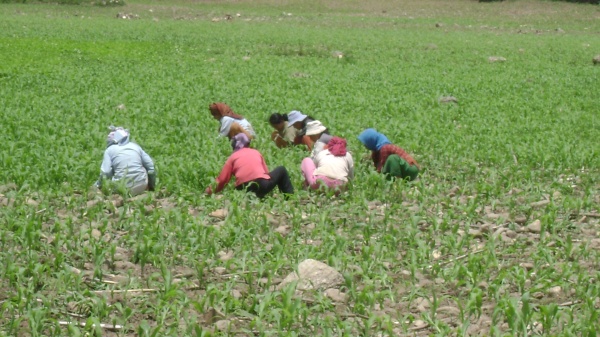
women working at maize field in shergaon
Within the same boundary of Horticulture farm you can find cold water fish Hatchery. This hatchery was developed to supply Rainbow and Brown trout seeds to production centre at Samteng Production centre. The Samteng centre is still under construction. It will be a great achievement and historic moment if the productions starts, which is very unlikely.
Schools
Shergaon has got 4 schools all affiliated to CBSE. Two primary Schools, one inside the premises of State Horticulture farm another near Halipad. The one near helipad existed since early 50s. Shergaon has got a Govt Secondary school too. VKV Shergaon is located at western side of village. The school has been upgraded to class 12.
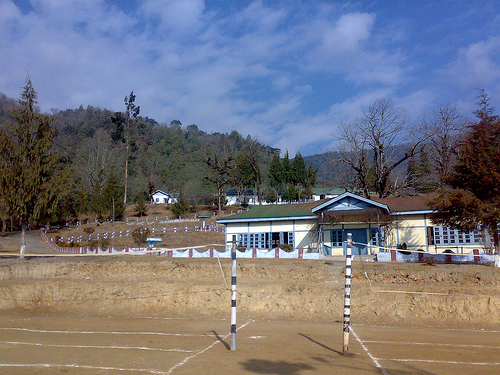
VKV shergaon
Monasteries.
Shergaon has got two monasteries. The lower one called Lhagang and the upper one Zengbu. Zengbu has got dedicated monk and his assistant to carry out the work. You can find lots of prayer flags in and around the monastery, mostly erected by families of departed souls. It differs from normal prayer flags as they are printed in black ink.
People and Society.
Almost all the surnames of shertukpen community can be found in shergaon, namely Thungon, Lama, Khrimey, Thungdok, Dingla. The surname is very important to sherdukpens. It tells you a lot about your clan. The family is the basic unit as in other societies, and then comes the clan, which is refered to as Rhung. All members of Rhung will have same surname but reverse is not true. For example Thungons have two Rhungs in Shergaon. One cannot be member of two different Rhung. Like caste system in Hindu society birth decides which Rhung one belongs to.
Matrimonial alliances cannot happen between persons of same surname. People with same surname are considered as brothers and sisters even if they may be far separated geographically.
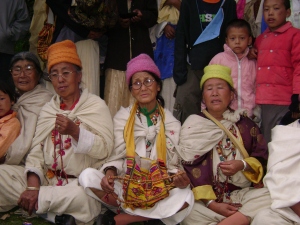
elderly women of shergaon
Fishing and Hunting are the two main source of entertainment for the people of shergaon. They have developed various methods of fishing and Hunting. The knowledge about the methods have been passed on to generations. Some of methods of fishing are so unique that you can never find them anywhere in the world.
Religion
People here follow Buddhism along with Animism. You cannot separate the two. They follow Mahayana form of Buddhism. Both monk and priest have equal significance in life of the people.
They have a very developed form of tantric system. The priest is called Chizi. He is the first person to be called incase of emergency or illness. People have great faith in them. How a person turns into a Chizi is also a very interesting story. Unlike Buddhist monks a person cannot be taught to be Chizi. It is said that a would-be Chizi gets its education through dreams. Once accepted as Chizi he has to maintain complete cleanliness. There are lot of restriction for a Chizi, like he cannot eat onion, garlic, eggs and meat of specific animals. Villagers too need to be careful in serving food or drinks to Chizi. Utensils should be completely clean without a trace of restricted items.
Chekor Festival
Chekor is the festival celebrated by shertukpens. The literal meaning of the word chekor is “parikrama of knowledge”. This festival is one of the most elaborate festival I have ever seen. The festival is of a month long, filled with activities through out the month. This festival acts as coaching time for younger generations to know about their culture. This festival also tells a lot about how to behave and conduct the day to day activities of an adult villager.
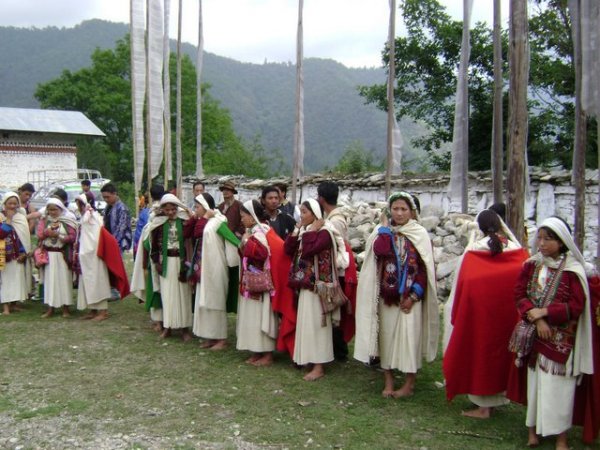
Getting ready for the day long procession bare feet.
Though this festival is celebrated my monpas, the mode of celebration differs. Here I will tell you how is it celebrated in shergaon, one of the dominant village of shertukepens.
This festival is observed during the month of May-June.The forth month of lunar calendar called Jipa Saka-Dawa. It starts with reciting holy scripts of Buddhist scared text. The village council (blu) hires monks from nearby villages and monasteries for the recitation. The monks recite the scripts whole day till a day before poornima (full moon) day.
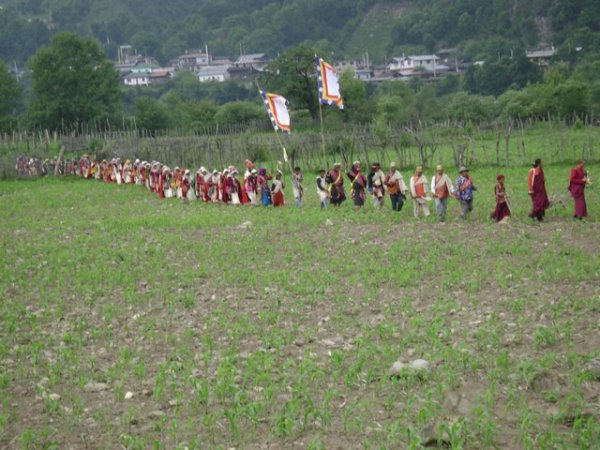
Chekor procession through maize fields
The concept of Blang.
The whole village is divided into three Blang. Azu lampu Blang, Champu Blang and Thuksna Blang. The name of first two Blang are associated with the kind of folk dance they endorse. The literal meaning of Blang is shed. the Blangs provide the working force for the peaceful conduction of the festival. The main participants of the Blang are the youth of that Blang. The elders of Blang act advisors. A house is selected for Blang activities. The youths prepare the beer to be used during the festival. Each Blang has to perform certain rituals independently like mane sang . The Blang assign some young boys to participate a makpepu (warrior) and young girls to carry the scriptures.
The Chekor day.
People wake early for the day long celebration. Young girls are sent to Lhagang (Gompa). There they are loaded with scriptures wrapped in cloth and allotted a designated slot in the procession. A Blang is designated as first Blang for a year. This is carried out in round-robin manner, making each Blang as first Blang after two years.
The day long procession starts from Lhagang Gompa. It is beautiful sight to see the procession. The Makpepus of all three Blang has their permanent slot to join the procession. The path of the procession is permanent and used once a year. So Makpepus have extra work to clean the procession path.
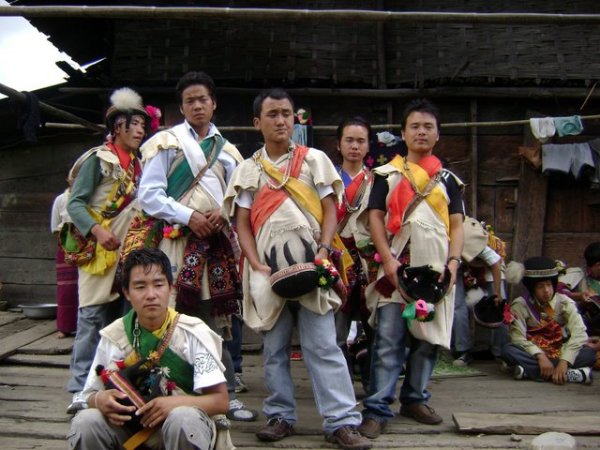
Makpepu getting ready to join the procession
The procession is depiction of how the scripture reach from india to lhasa in Tibet. Makpepus are the soldiers which protect the scriptures. During the day they perform war dance at several places. The war dances with war-cry are very specific to chekor festival. Youth in colorful traditional dress performing the dance is a spectacular sight.
Every clan has their designated spot called Chodham to receive the procession. As the procession is lead my monks, the clan is blessed by them. Small puja is performed for the wellbeing of the clan at their Chodham. The Brokpu (cow boys) too has their own Chodham. The prayer if conducted for wellbeing of cattle. Specialty about this prayer is the offering is made in milk unlike other Chodham.
After this Chodham they reach Kro. This place was a village. You can still find some remains of extinct village. Here the Abosu joins the procession. Before settling for lunch Makpepu and Abosu perform the war dance. Every family sends the lunch box for the members in the procession. And for those who cannot bring lunch Blangpu serve them. You will never be thirsty or hungry during this fest.
After the lunch, the mask dance is performed. The Zam, Kengpu, Jo-meme,Tang-tang-mu perform their dances. These are the characters in the procession. Ttang-tang-mu depicts the boat man. Black mask and turban resembles a north Indian.
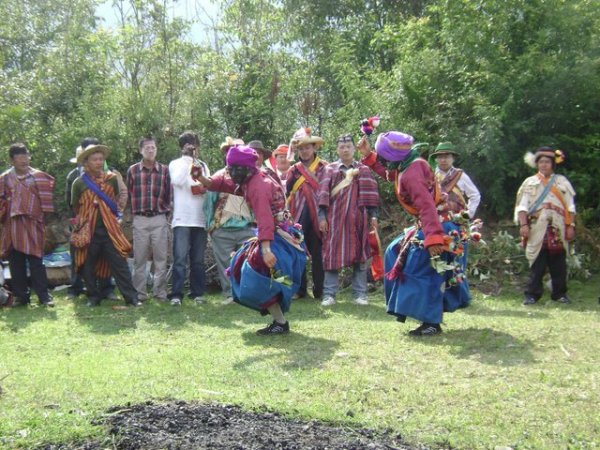
Tang-tang-mu dance after the lunch
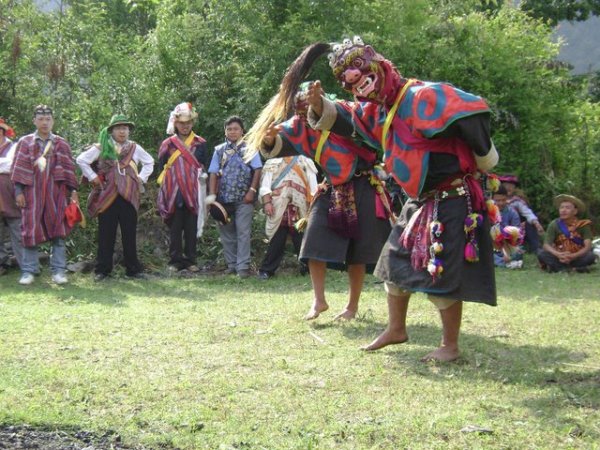
The synchronized Zam dance
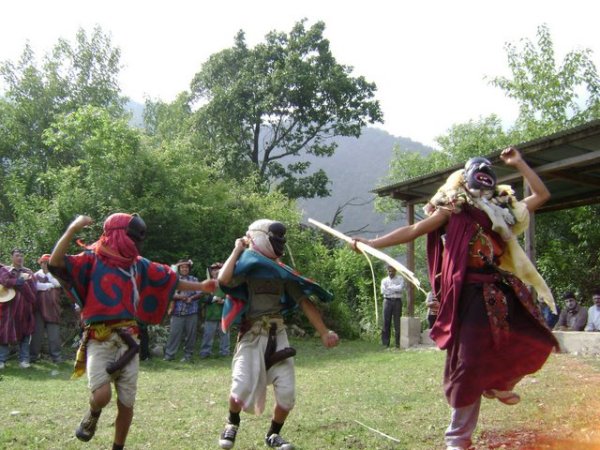
Kengpu dance under the guidance of Jo-meme.
The procession proceeds toward Thukman. Here puja is performed in the lake side. Just few hundred meters from here, there is a burial called sheygur where the Makpepu stab the burial. It signifies the defeat of demon who tried to disrupt the procession.
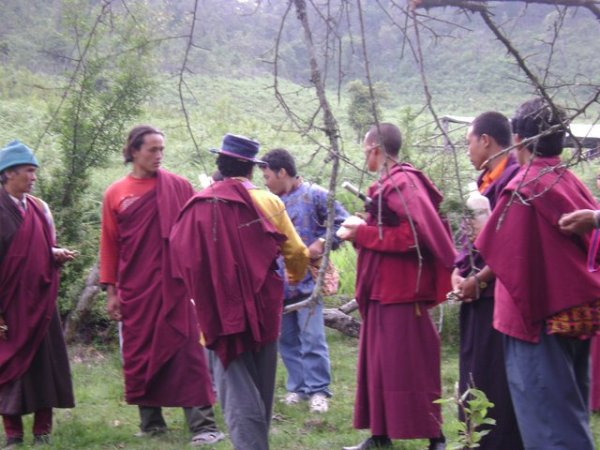
Monks performing puja at thukman
By now its evening. People have gathered near Gompa to receive blessing from the sacred texts. The receiving of blessing is called Wang. This is the time most of guest arrive to watch the celebration. The Gompa is very near to small stream. This stream is block to make a pool. The Makpepu arrive on the pool before Abosu .On the arrival of Abosu the water war begins. They throw fresh stream water to each other with war cry. Jo-meme makes sure that the sport is played peacefully with bamboo broom. Even the hit of Jo-meme is considered blessing. Make sure you get one.
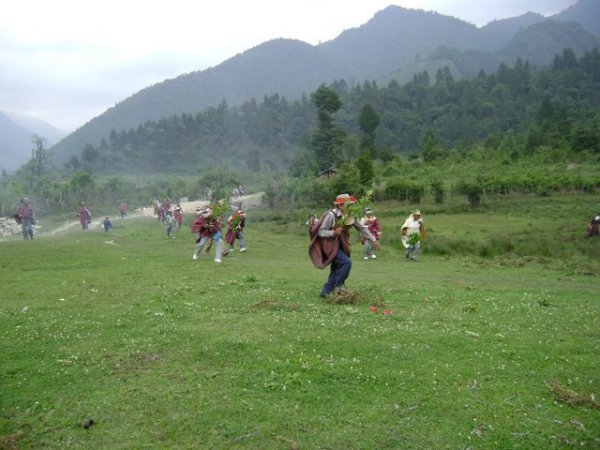
Charging Abosu
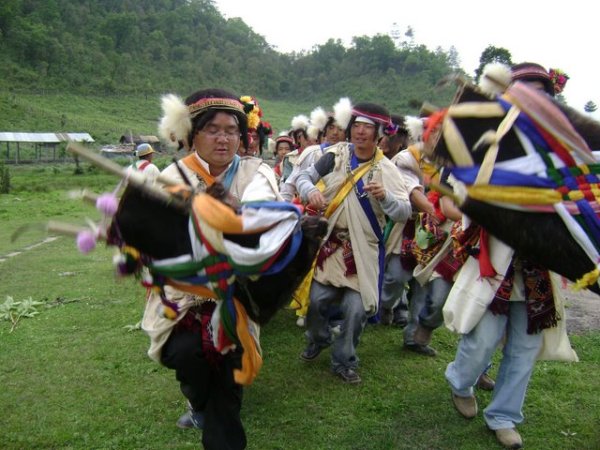
Makpepu performing the war dance
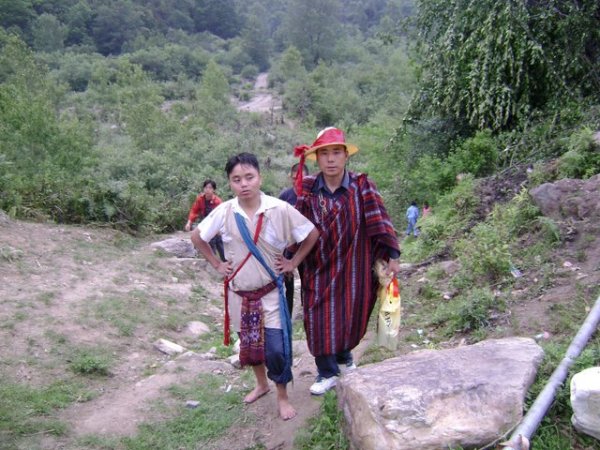
Member of makpepu and abosu after water sports fully wet
By this time the moon is at the horizon. The girls gather around the Lhagang (Gompa) to return the sacred text. Three rounds are made around Gompa for the people to take blessing. As the people start returning to their respective homes,boys and girls of each Blang invite them for dinner and drinks. Each Blang tries its best to woo its alumni.
As the moon goes higher into the sky, man folks gather in front of Lhagang for Deity appeasing ritual called Nurjang. Nurjang is a song which is sung to appease all the deities of ten directions. The song traces all ten directions. The Nurjang is interrupted with ritual of LhoJambe. The LhoJambe is considered a violent ritual. Elders narrate some incidents from the past where people have used the ritual to settle the scores. After the ritual of Nurgang-Lhojambe Blangpu Jomji the young girls serve rice beer. This mark the end of day long celebration of chekor.
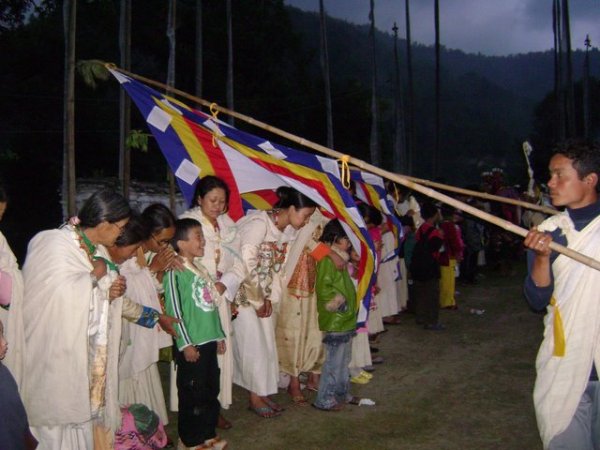
People getting wang- the blessing
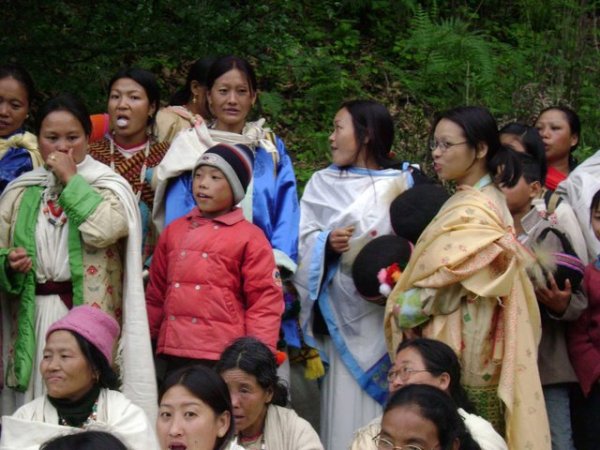
spectators